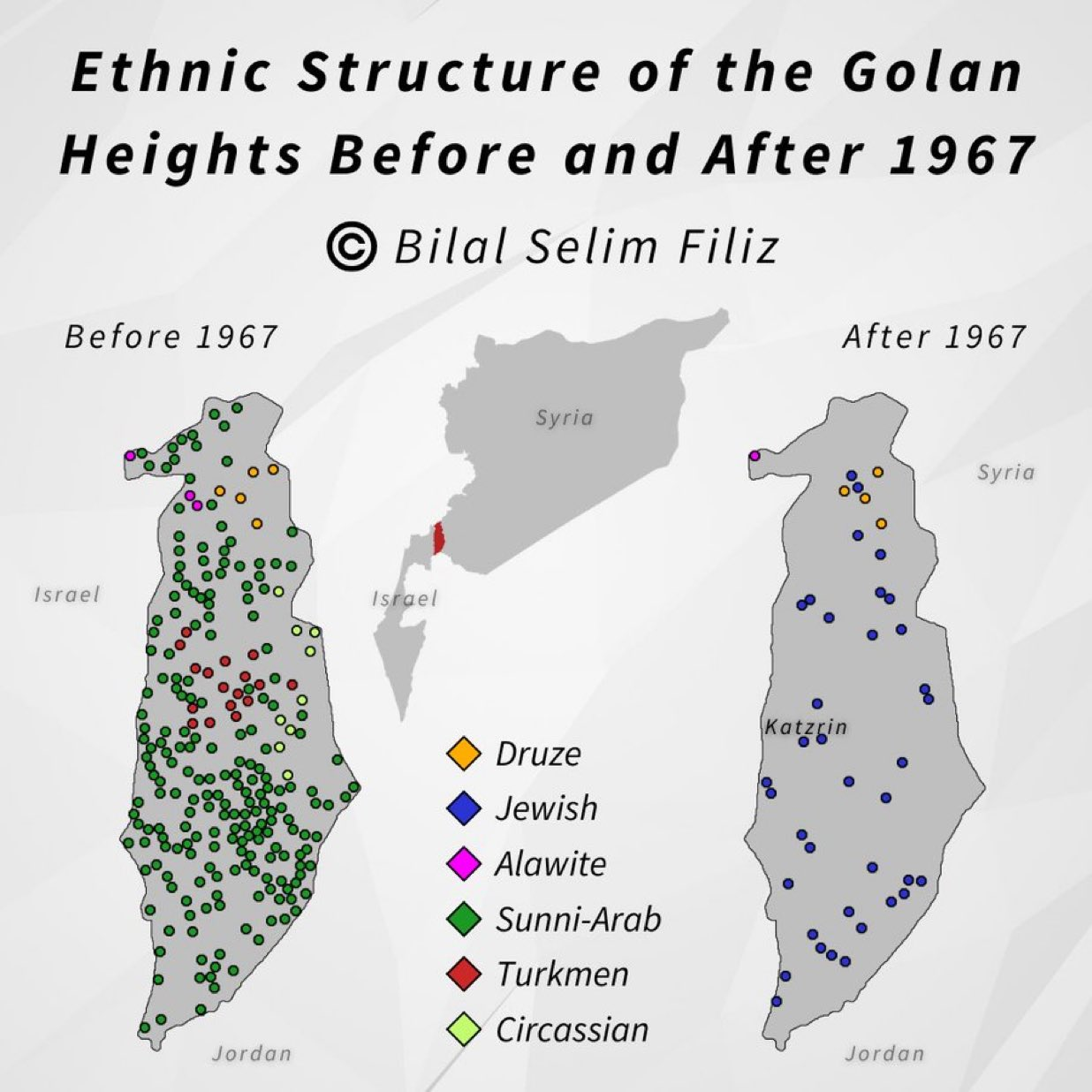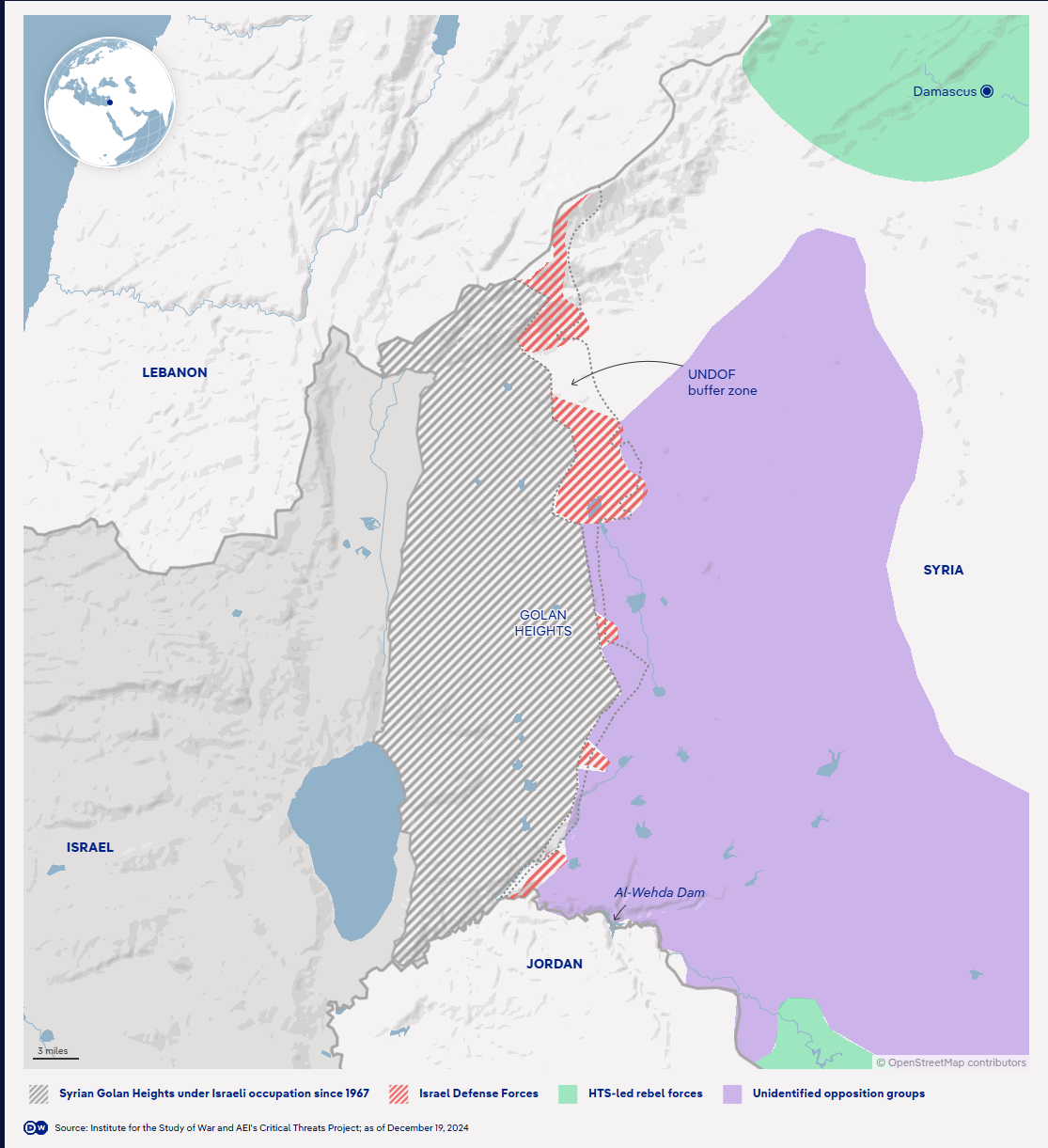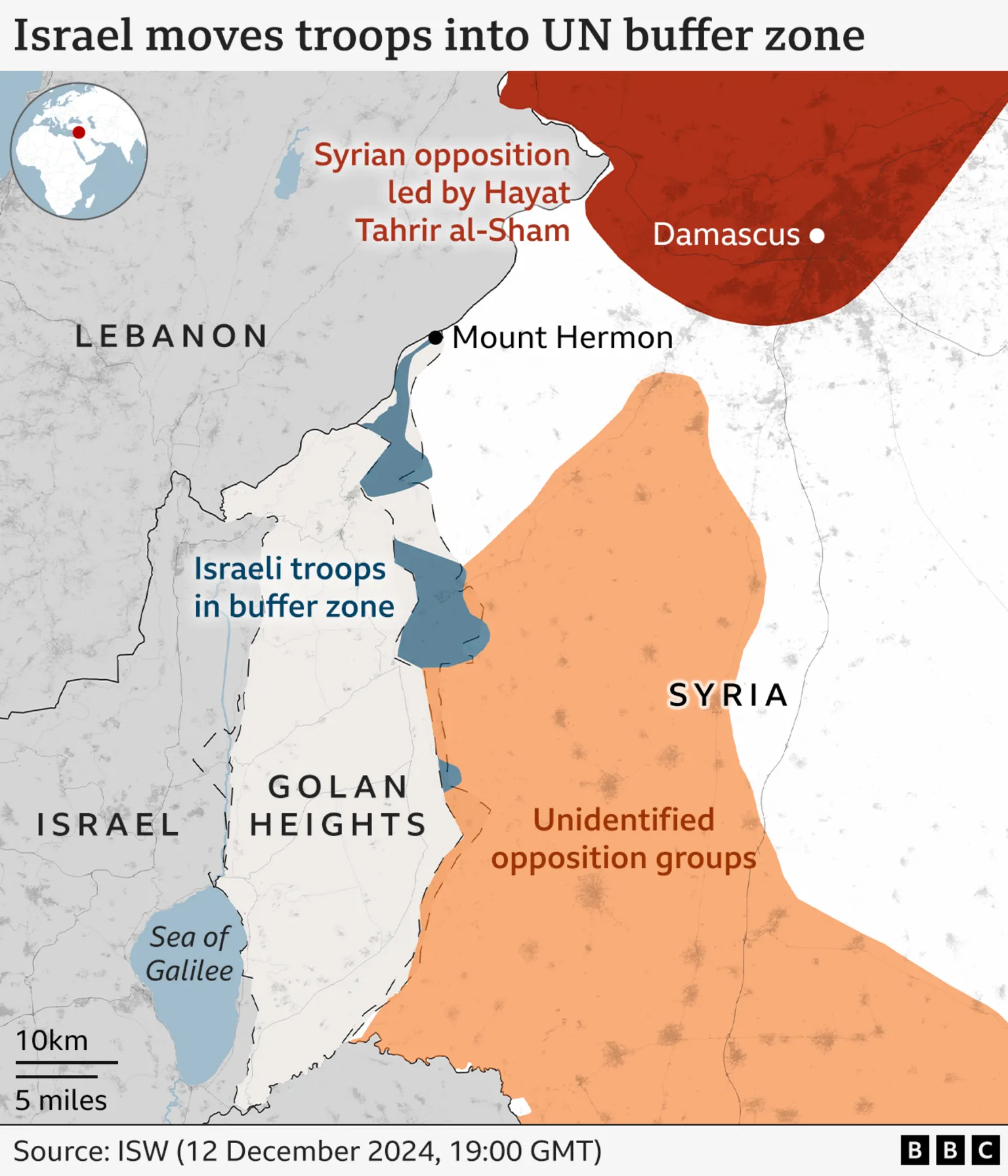Executive Summary
Golan Heights, a strategic plateau and focal point of conflict for decades, has regained its prominence amidst the political transition in Syria. With Bashar Al-Assad fleeing the country and rebels occupying the space. Israel is eyeing to protect its borders and safeguard its resources, especially the Golan Heights which was captured in the 1967 war. This report explores the historical background of the Golan Heights and its strategic significance and future scenario of West Asia.
Background:
The 1,150 sq km Golan Heights is a rocky plateau in southwestern Syria which was a part of Syria until 1967 and a heavily fortified region. With the Jordan River & Sea of Galilee in the west, Mount Hermon in the North, Yarmouk River in the south and Wadi al-Ruqqād in the east.
- Six-Day War (1967): Israel by defeating Egypt, Jordan and Syria captured the Golan Heights from Syria to secure its strategic position for gaining a military advantage. The Israeli Air Force neutralized Syrian defense positions leading to the displacement of many local Syrians, including Druze Arabs. Days later Syria requested a ceasefire making Israel gain control of the area and making it part of its territory.
- Yom Kippur War (1973): Syria launched a surprise attack on Yom Kippur (the holiest day in the Jewish calendar) to reclaim the Golan Heights. Later a subsequent ceasefire in 1974 established a demilitarized zone monitored by the UN Disengagement Observer Force (UNDOF). Despite the ongoing tensions, this peacekeeping force has remained in this area.
- Annexation (1981): Israel annexed the Golan Heights which was rejected by the international community. The UN Security Council declared the annexation “null and void” and without legal effect.
- Peace Talks: Between 1999 and 2008, several peace initiatives were mediated by the US and Turkey to explore the possibility of Israel returning the Golan to Syria. But these talks have stopped unprecedented future talks with Syria demanding a full Israeli withdrawal from the pre-1967 border. These mutual disagreements, public opposition in Israel and the outbreak of Syria’s civil war in 2011 stalled the efforts. In 2019, US President Donald Trump officially recognised Israeli sovereignty over the Golan Heights. Syria criticised the move as “a blatant attack on its sovereignty”.
Strategic Significance
The Golan Heights with its elevation, strategic location and resource-rich nature make it vital for controlling and safeguarding assets by countries such as Israel or Syria. The territory is surrounded by freshwater resources like seas and rivers, tourism and fertile soil having a huge economic value to cultivating vineyards and orchards and raising cattle. These are the determinants that hostile countries cannot override others in that area.
Significance for Syria:
- The Syrian capital, Damascus is just 60 km away and is visible from the top of the Golan Heights.
- The Golan Heights provides a strong military advantage due to its elevation which was used by Syrian forces to shell northern Israel till 1967.
- The Golan Heights is a crucial source of vital resources like water for Syria. Its rivers, including the Yarmouk and Hasbani, contribute to the country’s water supply.
- The Golan Heights also represents national pride and sovereignty. It’s seen as an essential part of Syria’s territorial integrity and reclaiming the territory is a pride moment for Syrians.
- The Golan Heights has fertile land that Syria uses for agriculture, especially for growing crops and raising livestock contributing to Syria’s economy.
- Syria’s Stance: Syria has always insisted that it will not agree to a peace deal with Israel unless it withdraws from the whole of the Golan.
Significance for Israel:
- The area’s name is derived from the biblical city of Golan in Bashan, a city of refuge mentioned in the Bible (Deut. 4:43; Joshua 20:8), and it has deep historical ties to the Jewish people, particularly to the Tribe of Manasseh.
- In 1894, Baron Edmond de Rothschild purchased land in the Golan for Jewish settlement, through Ottoman land laws and this was challenged by local resistance. Later it became part of French-mandate Syria.
- The elevation of Golan Heights gives Israel a vantage point for monitoring Syrian movements. The topography provides a natural buffer against any military thrust from Syria.
- The eastern part of the Sea of Galilee falls under the Golan Heights which is a main source of freshwater for Israel.
- The territory has many Jewish settlements and it is also home to Israel’s only ski resort promoting its tourism. So safeguarding this is very crucial for Israel.
Israel’s recent actions
- Israel has advanced their military into the Golan Heights and into the UN buffer zone to safeguard Israel’s border security from militias that were not part of the HTS-led government in Syria.
- Israel unanimously approved a more than 40-million-shekel ($11 million) plan to encourage demographic growth (double the population) in the Golan.
- Israel PM Benjamin Netanyahu said the advancement of the military is temporary and during his visit to the highest point of Mount Hermon he said “We will stay… until another arrangement is found that ensures Israel’s security.”
Analysis & Forecast
Israel’s focus on securing the Golan Heights comes in an attempt to safeguard its borders and potential threats from the Syrian militias after HTS grabbed power in Syria. While Israel’s military actions are framed as temporary, its demographic developing plans and military actions suggest a long-term intent to grab the region and its control. This strategy aims to create a buffer zone to strengthen Israel’s hold on vital resources and also keep an eye on its neighbouring countries like Syria and Lebanon.
As Syria is in transition they are much focused on solving internal issues and building their country and focused less on the external issues. However if the Israeli temporary turns into permanent then it would be termed as occupation thus challenging the sovereignty of Syria. Which might again turn into troubled relations between the two countries. This would also trouble Israel as it is planning to normalize its relations in West Asia it needs to act accordingly. Any extreme activities of Israel would jeopardize the relations between Israel and Arab countries like Saudi Arabia and UAE.
Conclusion
The Golan Heights remains a critical asset for both countries Syria and Israel for security, resource management and strategic depth. As Syria focuses on internal rebuilding immediate escalation can’t be predicted but Israel’s actions as an occupation could strain its efforts to normalize relations in the region. Balancing security imperatives and alternatives with diplomatic priorities with the so-called neutral HTS government in Syria will be essential for Israel to navigate challenges ahead in future.





Leave a Reply